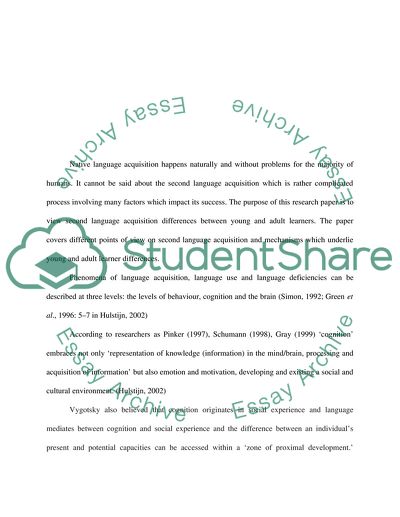Cite this document
(Second Language Acquisition: Differences between Children and Adults Term Paper, n.d.)
Second Language Acquisition: Differences between Children and Adults Term Paper. Retrieved from https://studentshare.org/education/1543072-second-language-acquisition-differences-between-children-and-adults
Second Language Acquisition: Differences between Children and Adults Term Paper. Retrieved from https://studentshare.org/education/1543072-second-language-acquisition-differences-between-children-and-adults
(Second Language Acquisition: Differences Between Children and Adults Term Paper)
Second Language Acquisition: Differences Between Children and Adults Term Paper. https://studentshare.org/education/1543072-second-language-acquisition-differences-between-children-and-adults.
Second Language Acquisition: Differences Between Children and Adults Term Paper. https://studentshare.org/education/1543072-second-language-acquisition-differences-between-children-and-adults.
“Second Language Acquisition: Differences Between Children and Adults Term Paper”, n.d. https://studentshare.org/education/1543072-second-language-acquisition-differences-between-children-and-adults.


